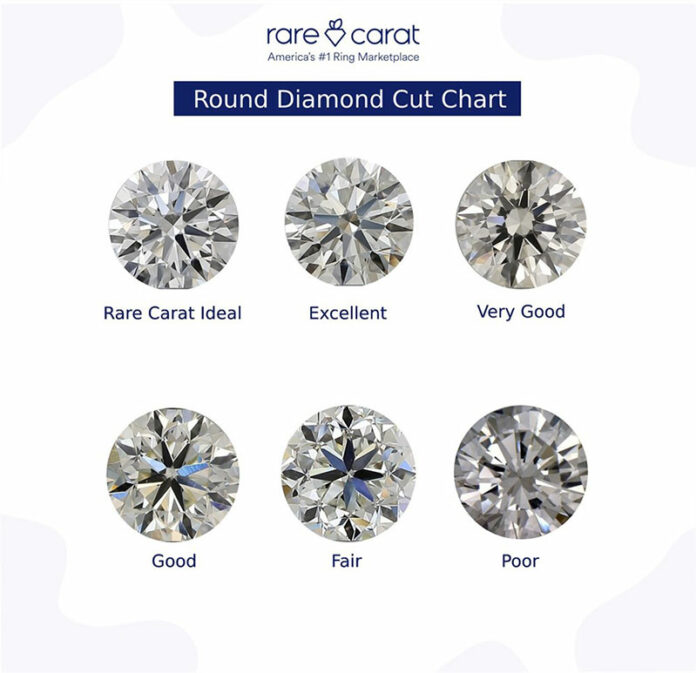All lab diamonds are beautiful, but some are more so than others. Inclusions are a common issue with diamonds, and it pays to be aware of the best and worst kinds. At their best, they don’t make a massive impact on the value of Rare Carat lab grown diamonds. At their worst, they can be a bad investment.
What Are Diamond Inclusions?
Inclusions is essentially another word for imperfections. Diamonds can contain various faults and blemishes as a result of their growing conditions, either as mined or lab grown diamonds. Mineral deposits, crystals, and other features trapped within the stones can leave small marks. There is also the risk of structural issues like dents, chips, and feather-like cracks.
Often, these marks are small and inconsequential, such as the fine needles and pinpoints. In other cases, clouds can appear that add a hazy look to the stone, or there may be a group called a twinning wisp.
Which Diamond Inclusions are the Most Detrimental to a Stone’s Value?
The worst diamond inclusions are the ones that have a significant impact on the stone and therefore lower its worth and overall value as an investment piece. In many cases, these issues are cosmetic. Buyers don’t want stones that have obvious marks or a hazy appearance. This could inhibit the purity, shine, and overall aesthetics of important engagement or anniversary jewelry. Also, larger fractures and dents could weaken the structural integrity and lifespan of the stone. This is why eye-clean stones with no inclusions visible to the naked eye are so much more valuable.
Chips are the worst imperfections because they can have both cosmetic and structural implications. The bigger the chip, the lower the value. Feathers are also undesirable because there is the risk of them turning into cracks and bigger problems down the line.
The impact of pinpoint inclusions and mineral deposits can vary depending on their size, number, color, and position. A large area of multiple dark inclusions is going to be much more unappealing than a few pale ones dotted throughout the stone. Also, it is important to avoid stones where the inclusions have reached the surface as knots.
Choosing the Right Clarity Rating and Cut for Your Investment
In an ideal world, all stones would be completely free of inclusions and offer great value for money. However, that’s not how the industry works. Because perfectly flawless stones are such a rarity, these gems are incredibly expensive compared to some of the options lower down the clarity scale. The best options for those looking for a good value investment are those between VVS1 and VS1 that have microscopic inclusions but are considered eye-clean. Beyond that, into the SI1-SI2 range, the stones become more noticeably defective, and the value drops.
This is a good starting point, but there are other variables to consider that can have an impact on the value of a stone. For example, the cut of a stone can either accentuate or mask imperfections in a diamond. Chips, dents, and clouds on the center of a stone will always be problematic. Yet, smaller fractures masked by the pattern of radiant or round brilliant diamonds aren’t such a problem.
Are Lab Diamonds Less Likely to Have These Problematic Inclusions?
Many diamond investors appreciate the clarity and quality of contemporary lab grown diamonds over mined stones. There is still the potential for these stones to have some minor inclusions from reactions with the material of the growing chamber. There is also the risk of some fractures and flaws from the pressure generated. Still, there won’t be the same mineral deposits as mined stones.
Finding the Best Value Included Lab Diamonds with Rare Carat
The best way to find value for money and get the right kind of included stone is to work with the gemologists at Rare Carat. This online marketplace makes it really easy to search for stones by personal preference, including the precise clarity rating and cut. The team then offers detailed reports on the GIA-certified stones that explain all the pros and cons in detail. This allows for a more informed choice and a better understanding of the look and value of a chosen stone. This level of transparency is why Rare Carat is such a trusted resource with a 4.9/5 rating on Trustpilot.
There is no need to be scared of the idea of diamond inclusions when Rare Carat makes it so easy to find quality eye-clean stones at the right price. There are always going to be unwise investments out there, but it isn’t hard to find a stunning VS2 stone with the right cut and look that is just right.

















